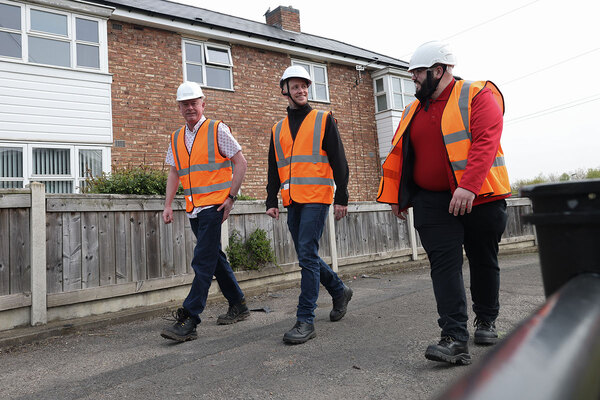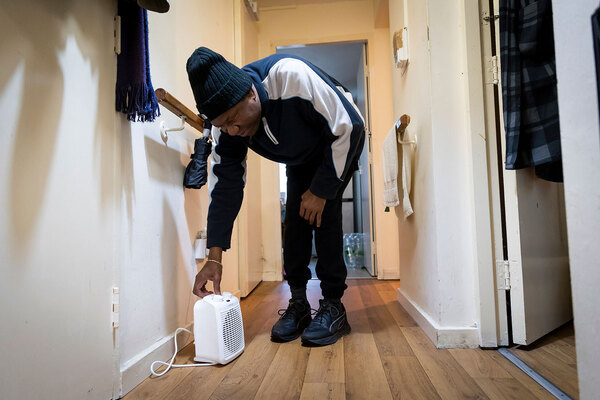Green monster
When you are on press deadline on a Wednesday afternoon, how do you start to get your teeth into a 238 page document?
The executive summary alone of the much delayed, eagerly anticipated, and biblically long green deal consultation is 43 pages. Given the planning policy framework document was 52 pages that is crazy. Only a few weeks ago, our web editor Tom Lloyd was told that the consultation was 176 pages but was being hacked back. Well, that clearly didn’t happen. Somewhere in the editing process an additional 62 pages were accumulated. Give the amount of paper required for the printing of this leviathan across the country, this could very well be the least green green policy consultation ever. I would like to make a disclaimer that there is no way I can do the consultation justice in one blog. It will probably fuel at least 10 posts.
Indeed, the majority of green bodies, have not yet made up their mind how to react to the consultation. There is a vacuum of reactions from the usual green bodies other than stock ‘we welcome the publication’ press releases. The fact is that the sector is still digesting its considerable contents and will be forced to do so for some time before being in a position to respond. And to many people’s dismay they are being given just eight weeks to do so – an extraordinary demand.
What chance did I then stand of dissecting it on a press day afternoon – the same week in which the government announced its housing strategy, its consultation of councils’ self financing debt allocations, its TSA standards and the new build figures?
Very little – so instead I went straight for the section that interested me most: page 125 which explores the design of the Energy Company Obligation.
Firstly, a moment of rare smugness (sorry). We revealed that ECO was to be split in to two pots – one for hard to treat homes and another for fuel poverty called ‘affordable warmth’ – it is. We revealed that ECO would be £1.3 billion a year – it is. We said that it would be split between these two pots at a ratio of roughly 25:75 respectively – and it is. We were also the first to reveal social landlords would be excluded from the ‘affordable warmth’ pot of ECO – they are (even if Chris Huhne publically rubbished this at the EEPfH conference last month). We also warned about the narrow emphasis of hard to treat funding on solid wall properties – this is the case. And we reported that a brokerage scheme would be introduced so that energy companies would not have an unfair monopoly over ECO – there is such a system being proposed.
So, on that ECO section: the relevant section states: ‘Some social housing providers have argued that households on the proposed eligible benefits in social tenure homes might benefit from Affordable Warmth support as not all social landlords have easy access to the resources needed to make these improvements, therefore Affordable Warmth should be “tenure blind”. We will welcome evidence on this point. However, in the light of the discussion above, the Government is minded to restrict Affordable Warmth eligibility to properties in private tenures.’
This call for evidence is something that Camco and the NHF are working on – but the sector needs to address properly and coherently if it is to convince the government to change its mind.
At the moment the government argues that the majority of fuel poor live in the private sector (81 per cent in private tenures); that the private sector has the lowest average standards of energy performance; and that in private housing alternative support is less likely to be available after Warm Front has come to an end (it also says that social housing has benefited ‘disproportionately’ from measures through CESP and CERT and from Decent Homes work). These are compelling arguments. And, in terms of getting the best bang for the government’s buck in tackling fuel poverty is hard to disagree that this might be the most efficient way to do so – but that doesn’t mean it is the right way. Based on the current design of ECO, the government might be able to reduce fuel poverty by between 350,000 and 500,000 by 2022 but that doesn’t mean it is helping the people who need it most.
Social tenants are a generally more low income and more vulnerable section of society than private sector residents. They are also in their homes for more of the day as many are retired, unemployed, ill or disabled, meaning they are more likely to be hit hardest by fuel poverty. ECO should help these people – even if it makes the use of ECO less efficient.
As National Housing Federation chief executive David Orr said in his response to the consultation today: ‘the document contains the unhelpful and misleading claims that social housing has benefited disproportionately from subsidy up to now and that the Decent Homes programme has largely sorted, or will sort, energy efficiency in the sector. We will be arguing strongly both that social landlords should have access to the fuel poverty element of subsidy, since fuel poverty has a higher prevalence in social housing than any other tenure.’
Bravo.
This is hammered home when you look at the way they propose to distribute affordable warmth funding. Page 122 of the consultation states that the government plans to target the affordable warmth cash at low income households that ‘include an older person, a child or someone with a disability and who do not have access to alternative sources of support to improve their heating arrangements’. To find these people this it suggests using benefits status as a guide. This, it says, is because the benefits system is an effective and accurate means of targeting households on low incomes in a way that can easily be verified and regulated. This mean a link to the DWP’s planned Universal Credit IT data base that comes in to effect in 2013
Another way it suggests distribute the funds would be through an area-based approach as it used for CESP funding. It says that it anticipates that energy companies might use benefit status to work out eligibility when distributing funds. This could be tricky for the first year of the scheme when the Universal Credit system has not yet begun.
But aside from these details, if the government believed its own rhetoric surrounding the social sector being far more benefit driven than any other sector then it would seem odd to exclude it from fuel poverty funding.
In among all the bad news confirmed in the consultation, there was also some good news. Green Party MP Caroline Lucas this week championed the social tenant’s cause. She tabled an Early Day Motion to parliament calling for landlords to granted access to vital green subsidies as part of our Green Light Campaign. Since going to press we have received the backing of seven other MPs after just one day – including one Conservative - and counting. Please get your local MP to sign it here.
Another piece of good news is that during the FIT debate last night Chris Huhne showed then first signs he might support one of our two main campaign aims: that social housing solar photovoltaic schemes are classed as ‘community projects’ rather than as aggregated schemes which will be subject to the especially debilitating FIT rate of 16.8p/kWh.
On the same day that Caroline Flint led a Labour attack on the cuts to the FIT (which was defeated) Mr Huhne was asked specifically whether social housing PV schemes would count as community projects. He replied: ‘On social housing, I have already said that we will consult on whether it is appropriate to have a separate tariff for genuine community projects.’ This is clearly very good news. However, to balance it out he also said that the design of the scheme, which was introduced by the Labour government, means it is currently not legally possible to introduce a special rate for not-for-profit organisations such as social landlords. Hmmm. Well, we will see.
Something we can not claim to have predicted ahead of our rivals was the size of a government package of green deal incentives. Today Danny Alexander announced that there would ‘a special time-limited ‘introductory offer’ to kick off the green deal: £200 million. This, aside from being sold in the language of a market trader by the Treasury which clearly insisted that if there was to be any new money announced then they, not DECC, would do the announcing (see also David Cameron AND Nick Clegg stealing Grant Shapps’ thunder for the housing strategy announcement because there was new money involved) is a welcome move. Although vague on detail, it was met with enthusiasm by WWF et al. The next round of ‘nudges’ should be unveiled very soon so I will reserve judgement until I have heard the whole package of carrots and sticks before comment.
In the mean time, I have the remaining 200 pages to return to.








